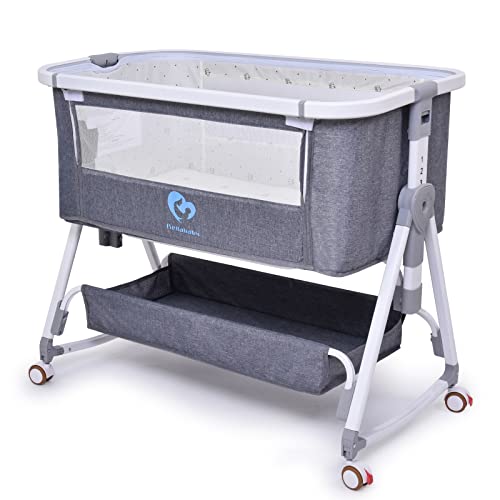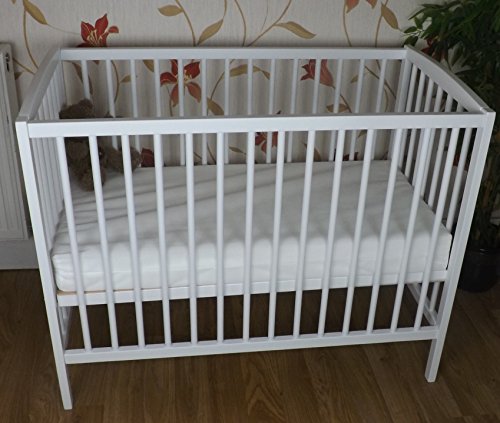Why Cot Newborn Is The Right Choice For You?
본문
Cot for Newborns: A Comprehensive Guide
Choosing the ideal sleeping plans for a newborn is one of the most significant decisions parents face. Among the essentials for brand-new moms and dads is a cot, which acts as a safe, comfortable sleeping space for the baby. This short article will check out the various types of cots readily available, crucial security factors to consider, suggestions for choosing the ideal one, and upkeep guidelines to guarantee toughness and safety.
Types of Cots for Newborns
When it pertains to cots, there are several alternatives in the market. Each type has its special functions and advantages. Below is a table summing up the various types of cots readily available for newborns.
| Type of Cot | Description | Pros | Cons |
|---|---|---|---|
| Requirement Cot | A traditional best crib with repaired sides. | Tough and resilient; good for long-term usage. | Can be large; might not fit in smaller sized spaces. |
| Cradle | A little, rocking cot designed for infants. | Portable and soothing for infants. | Minimal usage as baby grows; less steady. |
| Moses Basket | A light-weight basket with deals with. | Highly portable; cozy for newborns. | Much shorter lifespan; generally not ideal for older infants. |
| Travel Cot | A collapsible cot ideal for travel and temporary use. | Easy to carry; typically easy to establish. | May absence sturdiness; not as visually pleasing. |
| Co-sleeper Cot | Connects to the moms and dads' bed, allowing distance. | Promotes bonding; breastfeeding convenience. | Limited space; often more pricey. |
| Convertible Cot | Can change from a crib sets to a young child bed. | Adapts with baby's development; long-lasting investment. | Higher preliminary cost; assembly may be required. |
Important Safety Considerations
When choosing a cot for a newborn, security needs to constantly be the primary concern. Here is a list of crucial security requirements and Baby Cot guidelines to consider.
- Standards Compliance: Ensure the cheap cot bed satisfies safety standards set by regulative bodies such as the Consumer Product Safety Commission (CPSC) in the U.S. or the European safety standards.
- Slat Spacing: The distance between cot slats need to not exceed 2 3/8 inches (6 cm) to avoid a baby's head from getting stuck.
- Stability: The cot should be tough and steady. Shake the cot before purchasing to ensure it doesn't wobble.
- Bed mattress Fit: The bed mattress needs to fit snugly into the mini cot Beds, with no spaces bigger than two fingers between the mattress and the cot sides.
- No Hazardous Materials: Check for non-toxic finishes and materials, making sure that the cot is totally free from damaging chemicals.
- Get rid of Clutter: Avoid placing toys, pillows, or blankets inside the cot, as these can present suffocation risks.
Tips for Choosing the Right Cot
Choosing a cot can be an overwhelming procedure due to the myriad of choices available. Here are some suggestions to help enhance this process:
- Consider Size: Evaluate the size of your nursery or bed room. Guarantee the cot fits easily in the designated area.
- Prepare for Growth: Think about the longevity of the cot. Convertible cots might use much better value by adjusting to a growing kid.
- Budget plan Wisely: Quality cots can range widely in cost. Set a spending plan and stay with it, focusing on security and functionality initially.
- Research Brands: Read evaluations and perform research on different brands. Trustworthy makers must offer transparent information about their security practices.
- Convenience: Ensure that the bed mattress is firm and offers adequate assistance. A soft bed mattress might increase the risk of SIDS (Sudden Infant Death Syndrome).
- Aesthetic appeal Matter: While security is essential, consider how the cot fits into the total decor scheme of the nursery.
Upkeep of the Cot
Guaranteeing the safety and longevity of your newborn's cot requires ongoing upkeep. Here are some practical upkeep pointers:
- Regular Inspections: Routinely examine the cot for any loose screws or parts. Tighten them as needed to keep sturdiness.
- Tidiness: Wipe down the cot frequently with a wet fabric and moderate soap to get rid of dust and irritants.
- Bed mattress Care: Choose a waterproof cover for the bed mattress, making it simple to tidy spills or accidents. Frequently change the bed mattress if it shows indications of wear and tear.
- Safe Storage: If the cot is adjustable or convertible, store any removable parts in a secure area, ensuring they are not lost and are available for future use.
- Child's Development: Monitor your child's development. Transition to a toddler bed when they start climbing out of the cot to guarantee their safety.
Regularly Asked Questions (FAQs)
1. What is the very best type of cot for a newborn?
The very best crib cot varies depending on individual needs and area, however a Standard Cot is frequently recommended for its strength and long life-span.
2. How long can a newborn use a cot?
Typically, many children shift out of a cot between 2-3 years depending on height and weight.
3. Is a co-sleeper cot safe?
Yes, co-sleeper cots are designed to be safe, as long as they meet safety standards and are properly established.
4. Should I utilize bumpers in my cot?
It is recommended to prevent utilizing bumpers as they pose a suffocation danger. Instead, guarantee the cot is clear of any soft bed linen.

5. Can I use a second-hand cot?
If considering a second-hand cot, guarantee it adheres to the current safety requirements and has not exceeded its life-span or been remembered.
Choosing a cot for a newborn is a critical choice that needs mindful factor to consider of safety, space, and functionality. By understanding the types, safety features, and upkeep requirements, parents can confidently choose a cot that satisfies their family's needs. Ultimately, the right cot will offer a safe and comfy space for your newborn to sleep, adding to their well-being and advancement throughout those essential early years.



댓글목록 0